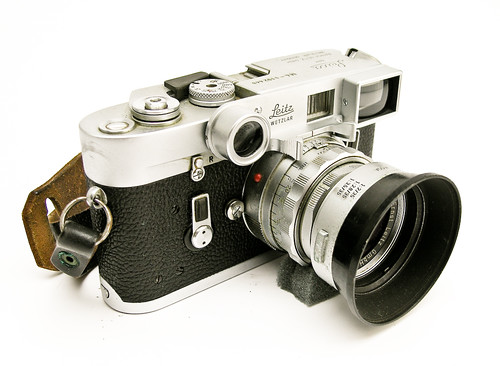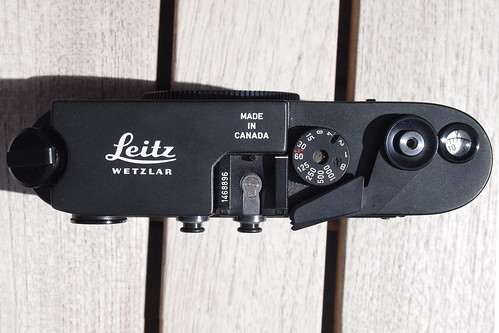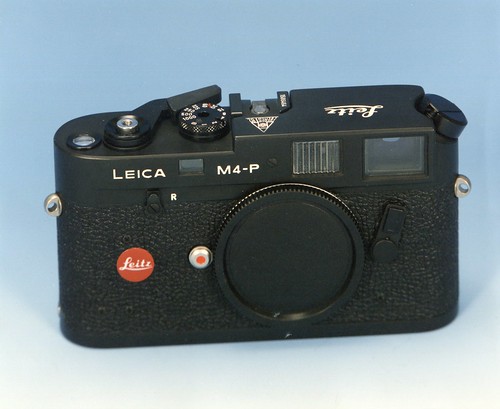Leica M4

|
| Photo of Leica M4 with Summicron-M 50mm/2 Dual Range equipped for close-up use. image by Christopher Robin Roberts |
The Leica M4 was introduced in 1967, and replaced the 1954 Leica M3. The Leica M4 is considered by many photographers and collectors alike to be the definitive model of the Leica rangefinder cameras.
The M4 is an all mechanical manual exposure camera without a built in exposure meter. A clip on coupled exposure meter was available as an accessory. Also available was the 'Visoflex' reflex head, which turned the camera into an SLR. Visoflex lenses have a different mount and cannot be used except with the Visoflex.
Leica M4-2
| ||
|
Following the disastrous M5, the M4 was reintroduced in 1978 as the M4-2 manufactured in Canada, with only detail differences.
Leica M4-P
|
Built from 1980 to 1986, with serial numbers from 1543351 to 1692950, successor to the M4-2 and likewise made in Canada. The main difference was a six-position rangefinder lever that allowed use of the 28/35/50/75/90/135 lenses by sharing the following frame combinations: 35/135mm, 50/75mm, and 28/90mm. The 28mm and 75mm frames were added for these newer lenses. The M4-P also has the .72 magnification frames found in the M6 and available for the M7.
Like all previous M cameras, the M4-P does not have a built in light meter. A motor winder, powered by AA batteries, was available, providing shooting up to 3 frames per second. Most M4-Ps were finished in black chrome, while some silver-chrome units were also available. M6 started production in 1984, overlapping production of the M4-P, and later M4-Ps shared the same rangefinder as the M6.
Links
- Leica M4-2 at Sylvain Halgand's www.collection-appareils.fr
- Leica M-series guide at Stephen Gandy's CameraQuest


